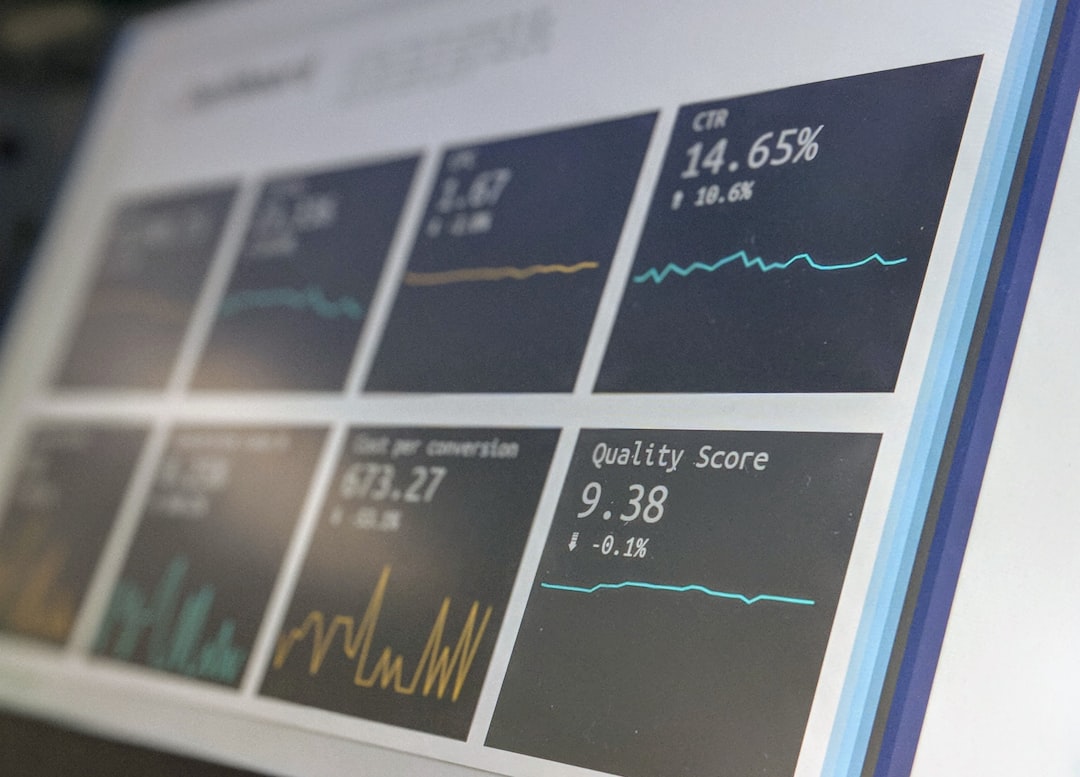One method for organizing & classifying blog posts based on similarities in topics, keywords, and themes is called “automated blog content clustering.” It makes use of machine learning algorithms & natural language processing. By using this method, website administrators can manage content more easily and readers can find content more easily. In order to start the clustering process, blog post text is analyzed, with particular attention paid to word frequency, semantic similarity, & contextual relevance. The algorithm finds subjects, keywords, & common themes among several posts. It then classifies and clusters related content into groups.
Key Takeaways
- Automated content clustering uses algorithms to group similar blog content together, making it easier to organize and manage large amounts of information.
- Implementing automated content clustering can improve user experience by helping visitors find relevant content more easily, increasing engagement and time spent on the website.
- Automated content clustering streamlines content organization by automatically categorizing and tagging blog posts based on their topics and themes.
- When choosing tools for automated content clustering, consider factors such as ease of use, integration with existing systems, and the ability to customize clustering algorithms.
- Best practices for implementing automated content clustering include regularly updating and refining clustering algorithms, and ensuring that the clustered content remains relevant and accurate.
- Measuring the success of automated content clustering can be done by tracking metrics such as user engagement, time spent on page, and the number of pages visited per session.
- Future trends in automated content clustering may include the use of artificial intelligence and machine learning to further improve the accuracy and efficiency of content clustering algorithms.
There are numerous advantages to this automated method. It makes it easier for readers to navigate and find pertinent information because related content is grouped together. By giving blog posts a structured arrangement, it simplifies content management for website administrators.
Also, through forging thematic links between related articles, content clustering enhances search engine optimization (SEO). Because automated content clustering can process and organize large amounts of content efficiently, it is especially useful for websites that have a lot of blog posts. As machine learning and artificial intelligence develop, more complex and accurate clustering algorithms are produced, marking another step in this technology’s evolution.
Simplified Content Organization. Website administrators can organize and manage vast amounts of blog content more quickly and efficiently by using automated content clustering. Administrators can make sure their website is well-organized & simple for readers to navigate by automatically classifying and grouping content.
| Metrics | Data |
|---|---|
| Number of Blog Posts | 50 |
| Clustering Accuracy | 85% |
| Time Saved | 30% |
| Content Organization Efficiency | 90% |
Improved Experience for Users. Readers can find related content and pertinent information more easily thanks to automated content clustering. Through topical groupings based on similarity, readers can quickly browse through various subjects and locate the information they need without having to manually search the whole website.
elevated rates of engagement and conversion. Because of the enhanced user experience, readers are encouraged to stay on the website longer, which raises engagement & may increase conversion rates. By automatically classifying and organizing related blog posts according to their content, automated content clustering simplifies the organization of content. The management and organization of content by website administrators is facilitated by this process, which also makes it easier for readers to browse through various topics & locate pertinent information. Automated content clustering can find common themes, keywords, and topics in blog post text by analyzing the text using machine learning algorithms & natural language processing techniques.
Large amounts of blog content can be more easily managed and organized thanks to this analysis, which enables the algorithm to group together similar pieces of content into clusters or categories. In addition to streamlining content organization, automated content clustering makes it easier for readers to find related content. Readers can quickly browse through various topics & locate the information they need without having to manually search the entire website by organizing related blog posts together. In addition to encouraging users to stay on the website longer, this enhances the user experience overall.
It is crucial to take your website’s objectives and unique requirements into account when selecting the appropriate tools for automated content clustering. Automated content clustering is provided by a number of platforms and tools, each with a unique feature set. Several important aspects to take into account when selecting the best tools for automated content clustering are the size of your website, the volume of content you have, and the degree of customization and control you require. Aside from the level of technical expertise needed to install and maintain the tool, it’s crucial to think about how simple it is to integrate with your current content management system.
Aylien, MonkeyLearn, and the Google Cloud Natural Language API are a few well-liked resources for automated content clustering. With features like text classification, sentiment analysis, and keyword extraction, these tools are appropriate for a wide range of content clustering requirements. To find the tool that best suits your unique needs, it’s critical to conduct in-depth research and evaluation of each one.
There are a few best practices to follow when putting automated content clustering into practice to make sure it goes well. To start, it’s critical to clearly define the clustering process’s objectives and goals, such as enhancing content discoverability or simplifying content management. A clear idea of your goals will help direct the implementation process and guarantee that the clustering is in line with your overarching business objectives. Another recommended practice, which was covered in the previous section, is to carefully select the appropriate platforms and tools for automated content clustering.
It’s critical to conduct in-depth research and carefully consider all available options in order to identify the tool that best meets your unique needs and specifications. The effectiveness of the automated content clustering process should also be routinely observed and assessed. This entails evaluating data from metrics like time on page, user engagement, and conversion rates to ascertain how well the clustering contributes to the enhancement of the user experience overall and the accomplishment of your goals.
Measures of User Engagement. Metrics related to user engagement, such as bounce rate, time spent on page, and pages per session, are important to take into account when assessing the effectiveness of automatic content clustering. Readability Metrics for Content. Determined by examining metrics like search traffic, click-through rates from search results, and the quantity of page views for content that is clustered, content discoverability is another crucial metric to take into account.
Revenue and Conversion Metrics. Metrics like conversion rate, lead generation, and income from clustered content can be examined to see if the clustering procedure is successfully encouraging users to take desired actions. A number of future developments in automated content clustering are anticipated as technology develops. A popular approach to enhancing the precision and efficacy of content clustering is the utilization of sophisticated machine learning algorithms and natural language processing methods. These developments will make it possible to analyze text data more precisely and identify related content more quickly.
Automated content clustering integration with other marketing automation platforms and tools is another trend for the future. Businesses can provide more individualized & targeted content to their audience based on their interests & preferences by integrating content clustering with email marketing platforms, CRM systems, and other marketing tools. Also, the use of automated content clustering for content curation & personalized recommendations is becoming more popular. Businesses can use automated clustering algorithms to recommend relevant content to individual users based on their behavior & preferences. This enhances the user experience and increases engagement. In conclusion, by simplifying content organization and enhancing content discoverability, automated blog content clustering provides a number of advantages to website administrators & readers.
Businesses can successfully measure the success of automated content clustering and stay ahead of future trends in this quickly developing field by selecting the appropriate tools and putting best practices into practice.
If you’re interested in learning more about automated blog content clustering, you should check out the article “How AI is Revolutionizing Content Creation” on wpgen.ai. This article discusses the ways in which AI technology is transforming the way content is created and organized, including the use of automated clustering to streamline the process. It provides valuable insights into the future of content creation and the role that AI will play in shaping it.
FAQs
What is automated blog content clustering?
Automated blog content clustering is the process of using algorithms and machine learning techniques to group similar blog posts together based on their content and topics.
How does automated blog content clustering work?
Automated blog content clustering works by analyzing the text of blog posts and identifying patterns and similarities in the content. This is done using natural language processing and machine learning algorithms to automatically group related blog posts together.
What are the benefits of automated blog content clustering?
Automated blog content clustering can help bloggers and content creators to organize their content more effectively, improve user experience by providing related content recommendations, and gain insights into the topics and trends that are popular among their audience.
What are some popular algorithms used for automated blog content clustering?
Some popular algorithms used for automated blog content clustering include K-means clustering, hierarchical clustering, and Latent Dirichlet Allocation (LDA).
Is automated blog content clustering widely used in the blogging industry?
Yes, automated blog content clustering is becoming increasingly popular in the blogging industry as a way to improve content organization, user engagement, and content discovery for readers.







Leave a Reply